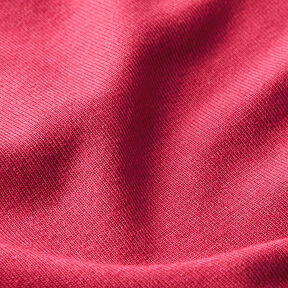In the world of fashion, we are increasingly aware of the environmental impact of the textile industry. Therefore, choosing sustainable fabrics has become an excellent way not only to protect the planet but also to create more conscious and responsible sewing projects. Fortunately, today there is a wide variety of eco-friendly materials available on the market, allowing you to take your love for sewing to a more sustainable level without sacrificing quality or style.
In this article, I will introduce you to some of the most popular sustainable fabrics and how you can integrate them into your sewing projects. You’ll find that making small choices can make a big difference for the environment.
1. Organic Cotton: The Classic and Conscientious Choice
Organic cotton is a much more sustainable alternative to conventional cotton. The main difference is that it is grown without pesticides or chemical fertilizers, which significantly reduces its environmental impact. Additionally, its cultivation generally requires less water, making it a more planet-friendly option.
Benefits:
- Free from harmful chemicals.
- Ideal for garments, accessories, and bedding due to its softness and durability.
- Easily available in a variety of colors and prints.
How to Use It:
This material is perfect for baby clothes, lightweight blouses, shirts, and pajamas. It also works well for decorative pillows and other items that come into direct contact with the skin, thanks to its softness and breathability.
2. Linen: Natural Elegance and Durability
Linen is one of the oldest fabrics around and, fortunately, one of the most sustainable. It comes from the flax plant, which requires less water and chemicals compared to many other textile plants. Additionally, linen is incredibly durable and becomes softer with each wash, making it a long-term investment for your sewing projects.
Benefits:
- Resistant, breathable, and naturally antibacterial.
- Easily biodegradable at the end of its life cycle.
- Suitable for both warm and cold climates due to its thermal regulation capabilities.
How to Use It:
Linen is ideal for lightweight clothing such as dresses, wide-leg pants, or transitional jackets. It’s also great for table linens, napkins, and curtains due to its rustic yet sophisticated appearance.
3. Tencel (Lyocell): The Revolution of Regenerated Fibers
Tencel, also known as Lyocell, is a regenerated fiber made from wood pulp, primarily eucalyptus, processed with a low environmental impact. The production process is closed-loop, meaning 99% of the solvents used are recovered and reused, making it highly sustainable.
Benefits:
- Soft, breathable, and wrinkle-resistant.
- Hypoallergenic and suitable for sensitive skin.
- Produces a silky and luxurious finish.
How to Use It:
Tencel is perfect for shirts, blouses, and dresses, but it also works well in sheets and pillowcases due to its soft and silky texture.
4. Hemp: Resilient and Eco-Friendly
Hemp is a natural fiber derived from the cannabis plant. Its cultivation requires very little water and no pesticides, making it a highly efficient ecological option. Additionally, hemp is incredibly strong and durable, making it ideal for garments and projects that need to withstand the test of time.
Benefits:
- Extremely strong and durable.
- Becomes softer with each wash.
- Naturally resistant to UV rays and mold.
How to Use It:
Hemp is excellent for projects like reusable bags, workwear, and outerwear. It can also be blended with other fibers to create softer, more workable fabrics.
5. Recycled Polyester: Giving Materials a Second Life
While conventional polyester is not a sustainable choice, recycled polyester (often derived from plastic bottles) offers an interesting alternative for those seeking materials with a lower environmental impact. By using recycled polyester, we reduce the need to produce new petroleum-based fibers and give plastics a second life.
Benefits:
- Durable and quick-drying.
- Reduces the demand for virgin plastics and fossil fuel resources.
- Available in a wide variety of fabrics, from sports mesh to denim.
How to Use It:
Recycled polyester is ideal for activewear, jackets, and accessories like backpacks or cases. It’s also a good choice for interior projects that need durability, such as curtains or upholstery.
6. Bamboo: Softness with Ecological Awareness
Bamboo is a sustainable fiber that grows rapidly without the need for pesticides or fertilizers. Bamboo fabrics are extremely soft and have natural antibacterial properties, making them ideal for projects requiring softness and comfort.
Benefits:
- Grows quickly and renews easily.
- Soft and skin-friendly, ideal for sensitive skin.
- Highly breathable and moisture-absorbent.
How to Use It:
Bamboo is perfect for baby clothes, pajamas, t-shirts, and also for towels and bedding due to its softness and durability.
Conclusion
Choosing sustainable fabrics not only helps reduce your environmental footprint but also opens up a world of creative possibilities for your sewing projects. Whether you opt for organic cotton, linen, Tencel, hemp, or any other eco-friendly option, you’ll be contributing to a greener future without compromising on quality or style.
By making conscious decisions about the materials we use, we can continue to enjoy our passion for sewing while caring for the planet. So, the next time you start a project, consider incorporating one of these sustainable fabrics into your plans. The planet and your wardrobe will thank you!






